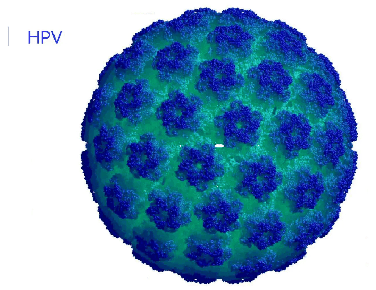When it comes to HPV, people usually associate it with cervical cancer in women, but according to incomplete statistics, the probability of HPV infection is 84.6% for women and 91.3% for men among those who are sexually active, with particularly high infection rates among men who have sex with men.
HPV, known as Human Papillomavirus, likes to infect epithelial cells in specific areas of the human body such as the cervix, vagina, vulva, penis, anal area, and oral mucosa. As long as there are tiny wounds on the skin/mucosa, HPV can take root.
The prevalence of HPV is generally categorized by type (high-risk, low-risk), HIV infection status (HIV-positive, HIV-negative), and infected areas (anus, genitals, oropharynx, etc.).
HPV Types: High-risk and Low-risk
The HPV family is very large, with over 200 subtypes categorized by their carcinogenic potential into high-risk and low-risk types.
Infection with low-risk HPV 6 and HPV 11 can lead to genital warts, mostly benign growths that can appear on hands, feet, face, and genitals, ranging from harmless small lumps to pointed condylomas, causing psychological stress, affecting sexual life, and potentially leading to cancerous transformations.
Furthermore, HPV infection can reduce the quality of semen and impact fertility, for example, by lowering sperm motility, altering sperm morphology, increasing the chance of deformed sperm, and ultimately leading to infertility.
High-risk HPV strains such as HPV 16 and HPV 18 are often closely related to cancer, commonly causing penile, anal, oral, oropharyngeal, tonsillar, and cervical cancers.
Risk of HPV Infection in Men
Category: A study published in The Lancet Global Health indicates that nearly one-third of men worldwide are infected with at least one genital HPV type, with approximately one-fifth of men infected with one or more high-risk HPV types. The top three HPV types most easily infecting men are: Type 16 (5%), Type 6 (4%), and Type 51 (3%).
Areas: A meta-analysis published in The Lancet showed that in European males aged 15 and above, the prevalence rates of HPV infection in the anus, penis, oral cavity, and urethra are 78.4%, 36.2%, 17.3%, and 15.4%, respectively.
Age: Another study indicated that sexually active men are more susceptible to HPV infection, with infection rates as follows:
– In adolescents aged 15-19, the infection rate is 28%.
– Peaks at ages 25-29, with an infection rate of 35%.
– Maintains a relatively high level at least until the age of 50.
China: Data from literature reports show that the HPV infection rate in the anal and genital areas of heterosexual men in China is 14.5%, while among men who have sex with men, the rate is as high as 59.9%, reaching 87.5% in HIV-positive men who have sex with men.
Men Who Have Sex with Men and High-risk HPV
A meta-analysis on anal HPV infection factors among Chinese men who have sex with men, based on 20 relevant articles published between 2010 and 2022, found that the HPV infection rate among MSM ranges from 40% to 60%, with Beijing having the highest infection rate (71.4%).
In the MSM population, both 1 and 0 have the potential to be infected with HPV, with only slight differences in the affected areas.
An analysis of oral HPV infection among the global MSM population published in 2016 showed that HIV infection is a significant influencing factor for oral HPV infection:
HIV Negative
HIV Positive
HPV Type 16
3.0%
4.7%
High-risk HPV
9.1%
16.5%
Any HPV Type
17.1%
28.9%
Similarly, HIV infection is a risk factor for anal HPV infection in MSM.
Why Does HIV Increase the Risk of HPV Infection?
– Cells infected with HIV release proteins called tat and gp120, which can help HPV establish itself in the body at both the infection and cellular levels, leading to persistent infection.
– During HPV replication, the tat protein significantly enhances HPV transcription, as well as the expression of HPV E oncogenes and L capsid proteins. In the AIDS stage, this can prolong HPV infection.
– HIV infection induces immune suppression, increasing the risk of HPV infection, persistence, reactivation, and viral load accumulation, leading to a higher diversity of HPV subtypes, lower clearance rates, and broader persistent infection.
– Both viruses can be transmitted through sexual contact, with HIV increasing the chances of new HPV infections. Conversely, HPV infection can facilitate HIV acquisition and progression.
Note: Age, smoking, and the number of sexual partners can also affect the likelihood of HPV infection.
Reminder: HPV infection in men usually does not present obvious symptoms but can lead to health problems. Many discover their HPV infection only after genital warts appear, and the absence of warts does not guarantee an absence of HPV, so testing is essential.


